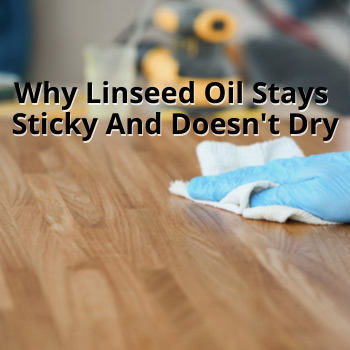Category: Woodwork Finishing
-

Is Tung Oil Food Safe? 10 Things You Need To Consider
If you’ve been researching food-safe finishes, you’ve probably seen Tung oil mentioned a few times. After all, it seeps deep into the wood and doesn’t sit on the surface. I needed a good food-safe finish for a salad bowl I’m making so I have put together this article that answers is Tung Oil food safe?…
-

Should You Sand Wood After Staining? The Solution!
Sanding is an important factor in woodwork to ensure you get a good finish. Lately, I have heard people suggesting to sand after applying stain which is contrary to what I do so I decided to investigate further. Below is what I found out, should you sand wood after staining? Wood should be sanded BEFORE…
-

Does Linseed Oil Smell? We Tested It
As I’ve written elsewhere, Linseed oil is one of my favorite dry finishes. The first time around, I had my doubts about its strength and applicability, but my biggest concern was its smell. Upon opening the bottle of linseed oil, you can detect a non-neutral smell. And this might make you wonder if the smell…
-

Sticky Linseed Oil Not Drying – Here Is Why
I remember the first time I used linseed oil. The tabletop was covered and looked beautiful right away, and the oil hadn’t even dried yet. Then a few days passed, and the oil remained wet and sticky. After a week of waiting and finding the oil still sticky and wet, I decided to find a…
-

My Tried And Tested Alternatives To Linseed Oil
I don’t like to rely too much on a single tool or resource. Over the past few months, I found myself being too dependent on Linseed oil. Last week, I tried multiple alternatives and possible choices that could replace linseed oil. You’ll be interested in knowing the surprising results I found. Pure tung oil is…
-

Epoxy Over Linseed Oil? Does It Work?
Linseed oil provides a great non-toxic way of finishing wood in a semi-permanent coat that increases water resistance and durability of wood by soaking it at depth. However, the coat can wear out after a while and is by no means 100% waterproof. The first time I used linseed oil over a project, I had…
